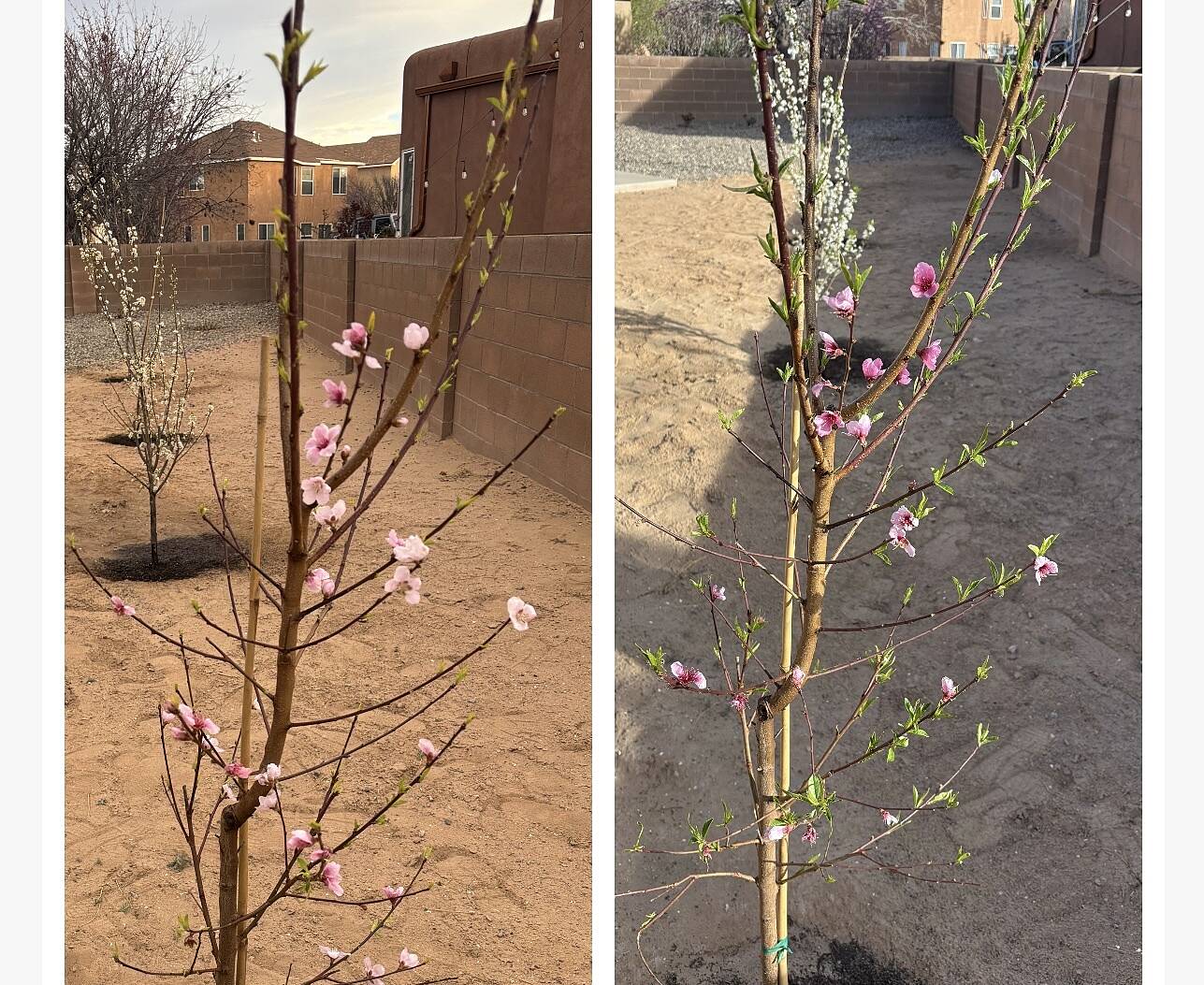Red Trees in Oklahoma
Oklahoma Trees
Home to eight mountain ranges and some of the most stunning scenery in the United States, Oklahoma’s diverse landscape is a sight to behold—and with the help of FastGrowingTrees, you can match the state’s exquisite backdrop in your own backyard!
Many Oklahoma homeowners look for fast-growing trees to provide color and shade to their gardens—but with varied growing zones spanning the state, you’ll want to make sure to select the right shade plants Oklahoma soils will love. From colorful shrubs to flavorful fruit trees, our wide selection will thrive at home in the Sooner State and help you complete your yard’s full vision.
Learn everything you need to know about planting in Oklahoma’s rugged landscape below.
Varieties of Trees in Oklahoma
Whichever part of Oklahoma you call home, our expert picks will suit your needs with their unmatched beauty, hardy qualities, and easy maintenance. We have a wide selection to enhance your beautiful mountain landscape, but here are some of our favorites for the Sooner State:

The Oklahoma State tree is the Eastern Redbud. Prized for its vibrant foliage, this small, deciduous flowering tree blossoms early in the spring season, before other trees have even begun to sprout their leaves, cascading tiny pink-purple flowers across Sooner State landscapes. Drought resistant and hardy down to -20 degrees, this tree is incredibly strong despite its delicate look.
However, there are numerous flowering trees that can thrive in the Oklahoma landscape. A number of classic varieties like cherry trees, crape myrtles, and butterfly bushes can complement your garden’s corners. But we also offer a number of unique trees if you want to stand out among the neighbors. For an out-of-the-box option, try the Summer Chocolate
Mimosa Tree, which combines a tropical feel with showy, hot pink blooms. But it’s not all show—it also boasts deer resistance and drought tolerance.
If you live in the cooler mountain regions of Oklahoma, where the growing season is shorter and the summer temperatures are mild, the golden Quaking Aspen is perfectly suited for your climate. With long-leafed, golden petioles that shake in the breeze, this shade tree can reach up to 50 feet tall and has amazing adaptability among various soils and climates. For more temperate areas, the juicy American Cranberry and the graceful Lombardy Poplar will feel right at home.
Maple trees in Oklahoma are a popular choice for adding a splash of color to your garden. Consider the dazzling Autumn Blaze or reliable October Glory Maple. These trees will set your landscape aglow in fall with their fiery crimson foliage while still withstanding the colder mountain climates that Oklahoma is known for. Other colorful, hardy favorites include the Gingko, Forsythia, and Burning Bush.

If you live in Oklahoma’s warmer hardiness zones, you can create your own personal orchard with several of our fruit trees—from unique varieties like Key Lime and Santa Rosa Plum to classic options like Navel Oranges and Honeycrisp Apple. We even have options that are perfect for colder climates, like the juicy North Star Cherry. No matter which you choose, just make sure to look up their pollination needs, as any fruit tree that’s not self-fertile will need at least one mate to produce.
Finally, most large landscapes aren’t complete without at least one Evergreen! If you want to increase the privacy of your property or create a screen to block howling winds, our towering, hardy evergreens can solve your problem. The robust Norway Spruce is hardy down to -40 degrees and is even drought tolerant. You can also consider planting a row of Thuja Emerald Green, Cryptomeria Radicans or Drought Free Evergreens, all of which will enhance your landscape’s natural beauty with their fast-growing, feathery foliage.
How to Maintain Trees in Oklahoma
Maintaining a healthy, robust Oklahoma tree will ultimately depend on several unique factors including (but not limited to) your microclimate, planting site, and chosen tree variety. However, the below details review the key factors you should take into consideration no matter where or what you plant.
Climate: The Sooner State enjoys a continental climate, as do all of the Great Plains—the temperature in the southern and eastern regions is influenced by the warm, moist air that moves northward from the Gulf of Mexico, which causes these areas to experience more humidity, cloudiness, and rain than the state’s southern areas. Oklahoma summers are long and hot and winters are shorter and milder than in the northern Plains. Climate will be a major consideration when you are selecting fast-growing trees for your Oklahoma residential landscape.
Know Your Planting Zones: Oklahoma falls across multiple planting zones, the designation used by the USDA to determine if a plant or tree will thrive in an area’s specific region. Oklahoma planting zones range from 6-8—be sure to double check your chosen tree’s variety against your location’s determined growing zone.
Choose the Right Species: Native species such as the Eastern Redbud, American Maple, and Flowering Dogwood, are great choices for your Oklahoma home as they have a long history of adaptation to the local environment.
Timing: The best times for planting trees in Oklahoma are the cooler months of spring or fall. Planting between late September and early December allows trees to establish their roots as the soil is still warm enough to nurture the tree’s roots. Fall also tends to have more consistent rainfall, which aids in the establishment process. But spring planting also brings its benefits. Planting between mid-February and early April most likely assures that young trees won’t be damaged by frost and give trees an entire growing season before facing the harshness of winter.
Site Selection: Select a planting site with appropriate sun exposure and soil drainage. Most trees prefer well-drained soil and full or partial sunlight. Additionally, you’ll want to make sure you have enough space for your tree, both for its expanding roots and vertical trunk. Consider the mature size of the tree when choosing the planting location to avoid interference with buildings, power lines, or other structures.
Precipitation: Consider the varying precipitation levels in your area when determining your care plan (or if you’ll prefer a drought-resistant tree!).
Soil Preparation: The official Oklahoma state soil is the Port. This dark-brown loam was first designated as a state soil in 1987 and is found in 33 of the 77 counties throughout the state, covering a total of around a million acres.
Stake Young Trees as Needed: To protect your newly planted tree from Oklahoma’s harsh winds, you may want to consider staking young trees to support their weak trunks, however, remove them after their first year in the ground to allow the tree to fully develop.
Common Questions about Trees of Oklahoma
When to plant trees in Oklahoma?
The best times for planting trees in Oklahoma are the cooler months of spring or fall. Both bring their own advantages—with fall planting allowing trees to establish their roots away from summer’s heat and spring allowing for young trees to establish themselves ahead of the winter freeze. Before planting, be sure to check the frost dates for your region.
What fruit trees grow in Oklahoma?
You can grow many of your favorite fruits in your Oklahoma backyard, including blueberries, cherries, apples, and more. Additionally, several tropical fruits can be successfully grown as patio plants in the Sooner State, including mangoes and guava!








































































































































































































































































